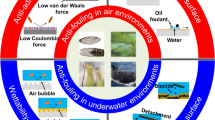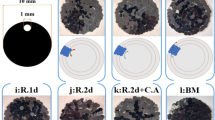Abstract
Electrospinning is a simple and versatile method to produce nanofiber filters. However, owing to bending instability that occurs during the electrospinning process, electrospinning has frequently produced a non-uniform-thickness nanofiber filter, which deteriorates its air filtration. Here, an adaptive electrospinning system based on reinforcement learning (E-RL) was developed to produce uniform-thickness nanofiber filters. The E-RL accomplished a real-time thickness measurement of an electrospun nanofiber filter by measuring the transmitted light through the nanofiber filter using a camera placed at the bottom of the collector and converting it into thickness using the Beer–Lambert law. Based on the measured thickness, the E-RL detected the non-uniformity of the nanofiber filter thickness and manipulated the movable collector to alleviate the non-uniformity of the thickness by a pre-trained reinforcement learning (RL) algorithm. For the training of the RL algorithm, the nanofiber production simulation software based on the empirical model of the deposition of the nanofiber filter was developed, and the training process of the RL algorithm was repeated until the optimal policy was achieved. After the training process with the simulation software, the trained model was transferred to the adaptive electrospinning system. By the movement of the collector under the optimal strategy of RL algorithm, the non-uniformity of such nanofiber filters was significantly reduced by approximately five times in standard deviation and error for both simulation and experiment. This finding has great potential in improving the reliability of electrospinning process and nanofiber filters used in research and industrial fields such as environment, energy, and biomedicine.
Graphical Abstract









Similar content being viewed by others
Data availability
The data that support the findings of this study are available from the authors upon reasonable request.
Change history
31 January 2023
A Correction to this paper has been published: https://doi.org/10.1007/s42765-023-00259-7
References
Huang ZM, Zhang YZ, Kotaki M, Ramakrishna S. A review on polymer nanofibers by electrospinning and their applications in nanocomposites. Compos Sci Technol 2003;63:2223.
Li D, Xia Y. Electrospinning of nanofibers: Reinventing the wheel? Adv Mater 2004;16:1151.
Sun B, Long YZ, Zhang HD, Li MM, Duvail JL, Jiang XY, Yin HL. Advances in three-dimensional nanofibrous macrostructures via electrospinning. Prog Polym Sci 2014;39:862.
Zhu J, Jiang S, Hou H, Agarwal S, Greiner A. Low density, thermally stable, and intrinsic flame retardant poly(bis(benzimidazo)benzophenanthroline-dione) sponge. Macromol Rapid Commun 2018;303:1.
Xu J, Liu C, Hsu P-C, Liu K, Zhang R, Liu Y, Cui Y. Roll-to-roll transfer of electrospun nanofiber film for high-efficiency transparent air filter. Nano Lett 2016;16:1270.
Gu GQ, Han CB, Lu CX, He C, Jiang T, Gao ZL, Li CJ, Wang ZL. Triboelectric nanogenerator enhanced nanofiber air filters for efficient particulate matter removal. ACS Nano 2017;11:6211.
Choi SW, Jo SM, Lee WS, Kim YR. An electrospun poly(vinylidene fluoride) nanofibrous membrane and its battery applications. Adv Mater 2003;15:2027.
Pham QP, Sharma U, Mikos AG. Electrospinning of polymeric nanofibers for tissue engineering applications: a review. Tissue Eng 2006;12:1197.
Park SM, Kim DS. Electrolyte-assisted electrospinning for a self-assembled, free-standing nanofiber membrane on a curved surface. Adv Mater 2015;27:1682.
Wu T, Ding M, Shi C, Qiao Y, Wang P, Qiao R, Wang X, Zhong J. Resorbable polymer electrospun nanofibers: history, shapes and application for tissue engineering. Chin Chem Lett 2020;31:617.
Song JY, Ryu HI, Lee JM, Bae SH, Lee JW, Yi CC, Park SM. Conformal fabrication of an electrospun nanofiber mat on a 3D ear cartilage-shaped hydrogel collector based on hydrogel-assisted electrospinning. Nanoscale Res Lett 2021;16:116.
Song JY, Kim DY, Yun HJ, Kim JH, Yi CC, Park SM. Electroconductive, flexible, and printable graphene nanoplate-carbon nanotube–polydimethylsiloxane composite collectors for three-dimensional conformal electrospinning. Compos Sci Technol 2022;227:1.
Conte AA, Sun K, Hu X, Beachley VZ. Effects of fiber density and strain rate on the mechanical properties of electrospun polycaprolactone nanofiber mats. Front Chem 2020;8:610.
Mahjour SB, Sefat F, Polunin Y, Wang LC, Wang HJ. Improved cell infiltration of electrospun nanofiber mats for layered tissue constructs. J Biomed Mater Res Part A 2016;104:1479.
Liu C, Hsu PC, Lee HW, Ye M, Zheng GY, Liu NA, Li WY, Cui Y. Transparent air filter for high-efficiency PM2.5 capture. Nat Commun 2015;6:1.
Abiodun OI, Jantan A, Omolara AE, Dada KV, Umar AM, Linus OU, Arshad H, Kazaure AA, Gana U, Kiru MU. Comprehensive review of artificial neural network applications to pattern recognition. IEEE Access 2019;7:158820.
Pisner DA, Schnyer DM. Support vector machine. Machine learning. London: Elsevier; 2020. p. 101.
Gou J, Ma H, Ou W, Zeng S, Rao Y, Yang H. A generalized mean distance-based k-nearest neighbor classifier. Expert Syst Appl 2019;115:356.
Charbuty B, Abdulazeez A. Classification based on decision tree algorithm for machine learning. J Appl Sci Technol Trends 2021;2:20.
Mahmood T. Generalized linear model based monitoring methods for high-yield processes. Qual Reliab Eng Int 2020;36:1570.
Kim MJ, Song JY, Hwang SH, Park DY, Park SM. Electrospray mode discrimination with current signal using deep convolutional neural network and class activation map. Sci Rep 2022;12:1.
Ahmed M, Seraj R, Islam SMS. The k-means algorithm: a comprehensive survey and performance evaluation. Electronics 2020;9:1295.
Kobak D, Berens P. The art of using t-SNE for single-cell transcriptomics. Nat Commun 2019;10:1.
Mnih V, Kavukcuoglu K, Silver D, Rusu AA, Veness J, Bellemare MG, Graves A, Riedmiller M, Fidjeland AK, Ostrovski G, Petersen S, Beattie C, Sadik A, Antonoglou I, King H, Kumaran D, Wierstra D, Legg S, Hassabis D. Human-level control through deep reinforcement learning. Nature 2015;518:529.
Silver D, Huang A, Maddison CJ, Guez A, Sifre L, van den Driessche G, Schrittwieser J, Antonoglou I, Panneershelvam V, Lanctot M, Dieleman S, Grewe D, Nham J, Kalchbrenner N, Sutskever I, Lillicrap T, Leach M, Kavukcuoglu K, Graepel T, Hassabis D. Mastering the game of Go with deep neural networks and tree search. Nature 2016;529:484.
Chen Y, Norford LK, Samuelson HW, Malkawi A. Optimal control of HVAC and window systems for natural ventilation through reinforcement learning. Energy Build 2018;169:195.
Kober J, Bagnell JA, Peters J. Reinforcement learning in robotics: a survey. Int J Robot Res 2013;32:1238.
Xu Y-H, Yang C-C, Hua M, Zhou W. Deep deterministic policy gradient (DDPG)-based resource allocation scheme for NOMA vehicular communications. IEEE Access 2020;8:18797.
Swinehart DF. The beer-lambert law. J Chem Educ 1962;39:333.
Angammana CJ, Jayaram SH. Investigation of the optimum electric field for a stable electrospinning process. IEEE T Ind Appl 2012;48:808.
Song JY, Oh JH, Choi D, Park SM. Highly efficient patterning technique for silver nanowire electrodes by electrospray deposition and its application to self-powered triboelectric tactile sensor. Sci Rep 2021;11:21437.
Katta P, Alessandro M, Ramsier RD, Chase GG. Continuous electrospinning of aligned polymer nanofibers onto a wire drum collector. Nano Lett 2004;4:2215.
Zhang D, Chang J. Patterning of electrospun fibers using electroconductive templates. Adv Mater 2007;19:3664.
Park SM, Eom S, Choi D, Han SJ, Park SJ, Kim DS. Direct fabrication of spatially patterned or aligned electrospun nanofiber mats on dielectric polymer surfaces. Chem Eng J 2018;335:712.
Li D, Ouyang G, McCann JT, Xia Y. Collecting electrospun nanofibers with patterned electrodes. Nano Lett 2005;5:913.
Reneker DH, Yarin AL, Fong H, Koombhongse S. Bending instability of electrically charged liquid jets of polymer solutions in electrospinning. J Appl Phys 2000;87:4531.
Park YS, Kim J, Oh JM, Park S, Cho S, Ko H, Cho YK. Near-field electrospinning for three-dimensional stacked nanoarchitectures with high aspect ratios. Nano Lett 2020;20:441.
Bisht GS, Canton G, Mirsepassi A, Kulinsky L, Oh S, Dunn-Rankin D, Madou MJ. Controlled continuous patterning of polymeric nanofibers on three-dimensional substrates using low-voltage near-field electrospinning. Nano Lett 1831;2011:11.
Chen H, Malheiro A, van Blitterswijk C, Mota C, Wieringa PA, Moroni L. Direct writing electrospinning of scaffolds with multidimensional fiber architecture for hierarchical tissue engineering. ACS Appl Mater Interfaces 2017;9:38187.
Sutton RS, Barto AG. Reinforcement learning: an introduction. London: MIT Press; 2018.
Szepesvári C, Littman ML. A unified analysis of value-function-based reinforcement-learning algorithms. Neural Comput 2017;1999:11.
Van Hasselt H, Guez A, Silver D, editors. Deep reinforcement learning with double Q-learning. Proc. Conf. AAAI Artif. Intell; 2016.
Thrun SB. Efficient exploration in reinforcement learning. London: Springer; 1992.
Lin L-J. Self-improving reactive agents based on reinforcement learning, planning and teaching. Mach Learn 1992;8:293.
Ryu HI, Koo MS, Kim S, Kim S, Park YA, Park SM. Uniform-thickness electrospun nanofiber mat production system based on real-time thickness measurement. Sci Rep 2020;10:20847.
Park BU, Park SM, Lee KP, Lee SJ, Nam YE, Park HS, Eom S, Lims JO, Kim DS, Kim HK. Collagen immobilization on ultra-thin nanofiber membrane to promote in vitro endothelial monolayer formation. J Tissue Eng 2019;10:1.
Li D, Wang Y, Xia Y. Electrospinning of polymeric and ceramic nanofibers as uniaxially aligned arrays. Nano Lett 2003;3:1167.
Acknowledgements
This work was supported by the National Research Foundation of Korea (NRF) Grant funded by the Korea government (MSIT) (No. 2020R1C1C1009443) and has been conducted with the support of Korea Institute of Industrial Technology as Development of intelligent root technology with add-on modules (KITECH EO-22-0005).
Author information
Authors and Affiliations
Corresponding author
Ethics declarations
Conflict of interest
The authors state that there are no conflicts of interest to disclose
Additional information
Publisher's Note
Springer Nature remains neutral with regard to jurisdictional claims in published maps and institutional affiliations.
The original online version of this article was revised to change author name Dong Young Park to Dong Yong Park.
Supplementary Information
Below is the link to the electronic supplementary material.
Rights and permissions
Springer Nature or its licensor (e.g. a society or other partner) holds exclusive rights to this article under a publishing agreement with the author(s) or other rightsholder(s); author self-archiving of the accepted manuscript version of this article is solely governed by the terms of such publishing agreement and applicable law.
About this article
Cite this article
Hwang, S.H., Song, J.Y., Ryu, H.I. et al. Adaptive Electrospinning System Based on Reinforcement Learning for Uniform-Thickness Nanofiber Air Filters. Adv. Fiber Mater. 5, 617–631 (2023). https://doi.org/10.1007/s42765-022-00247-3
Received:
Accepted:
Published:
Issue Date:
DOI: https://doi.org/10.1007/s42765-022-00247-3




